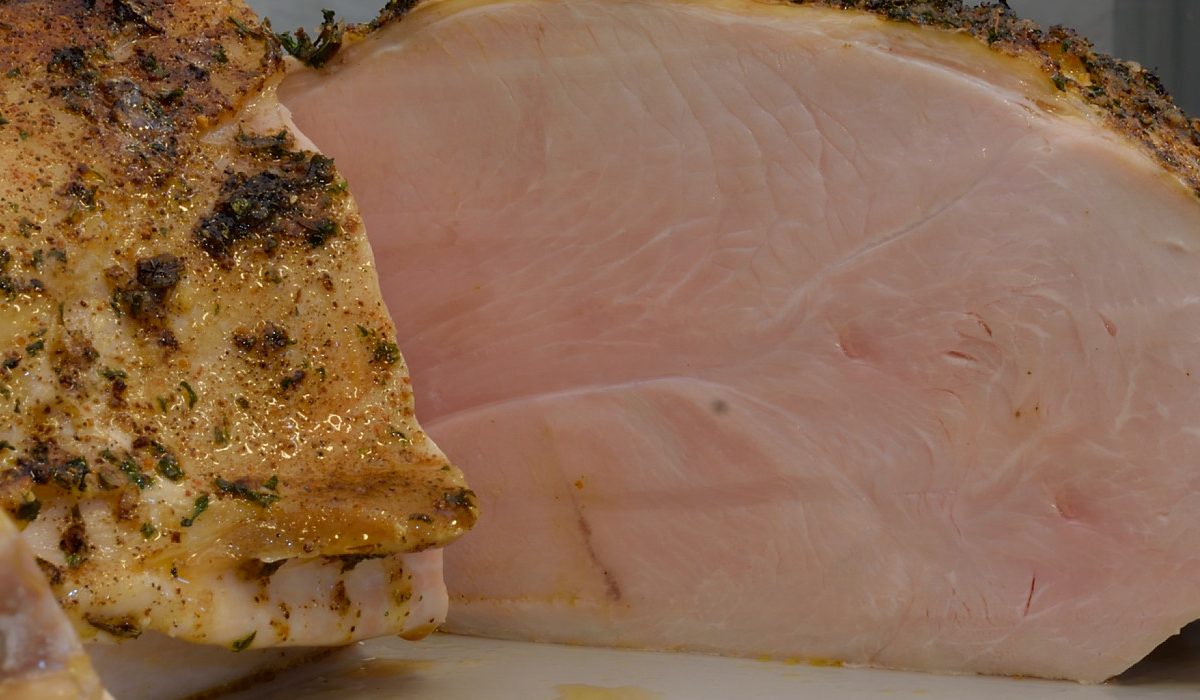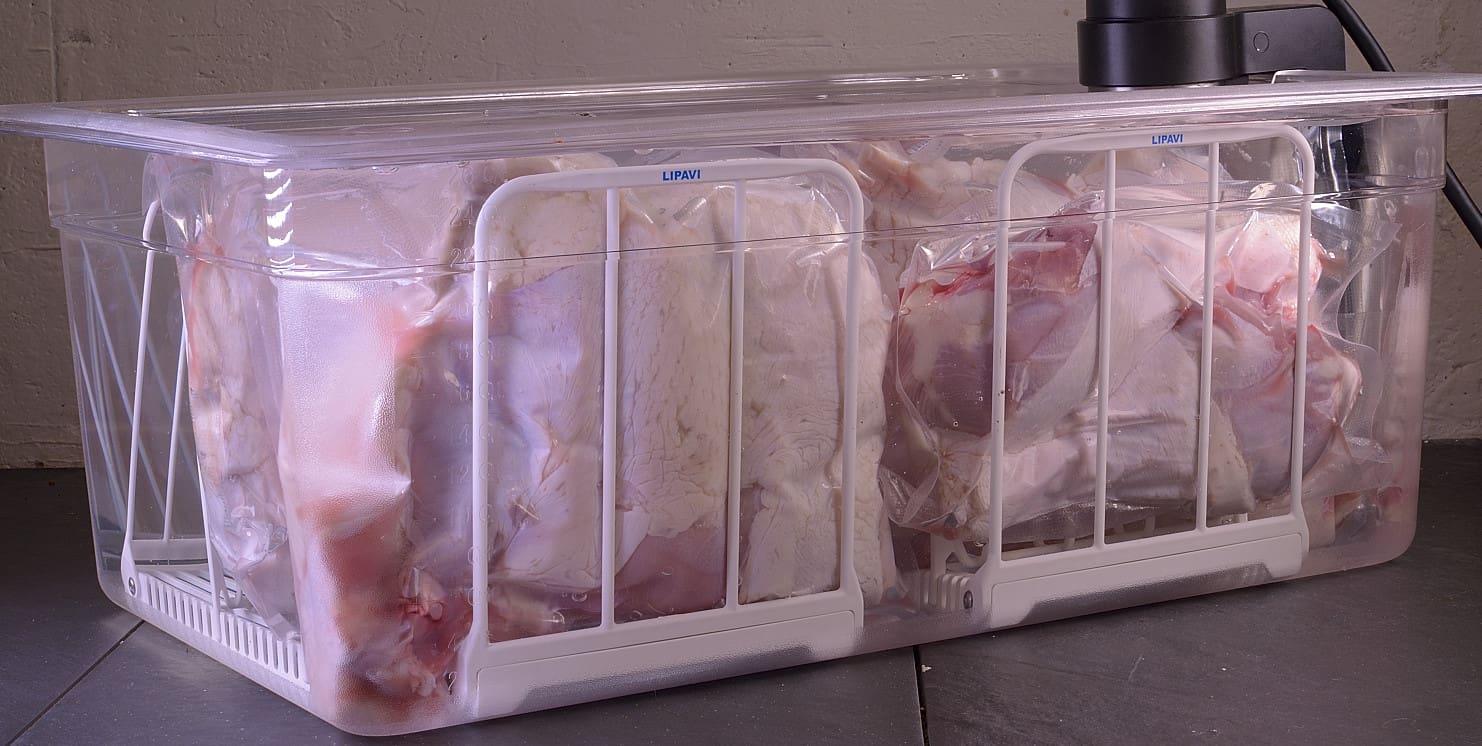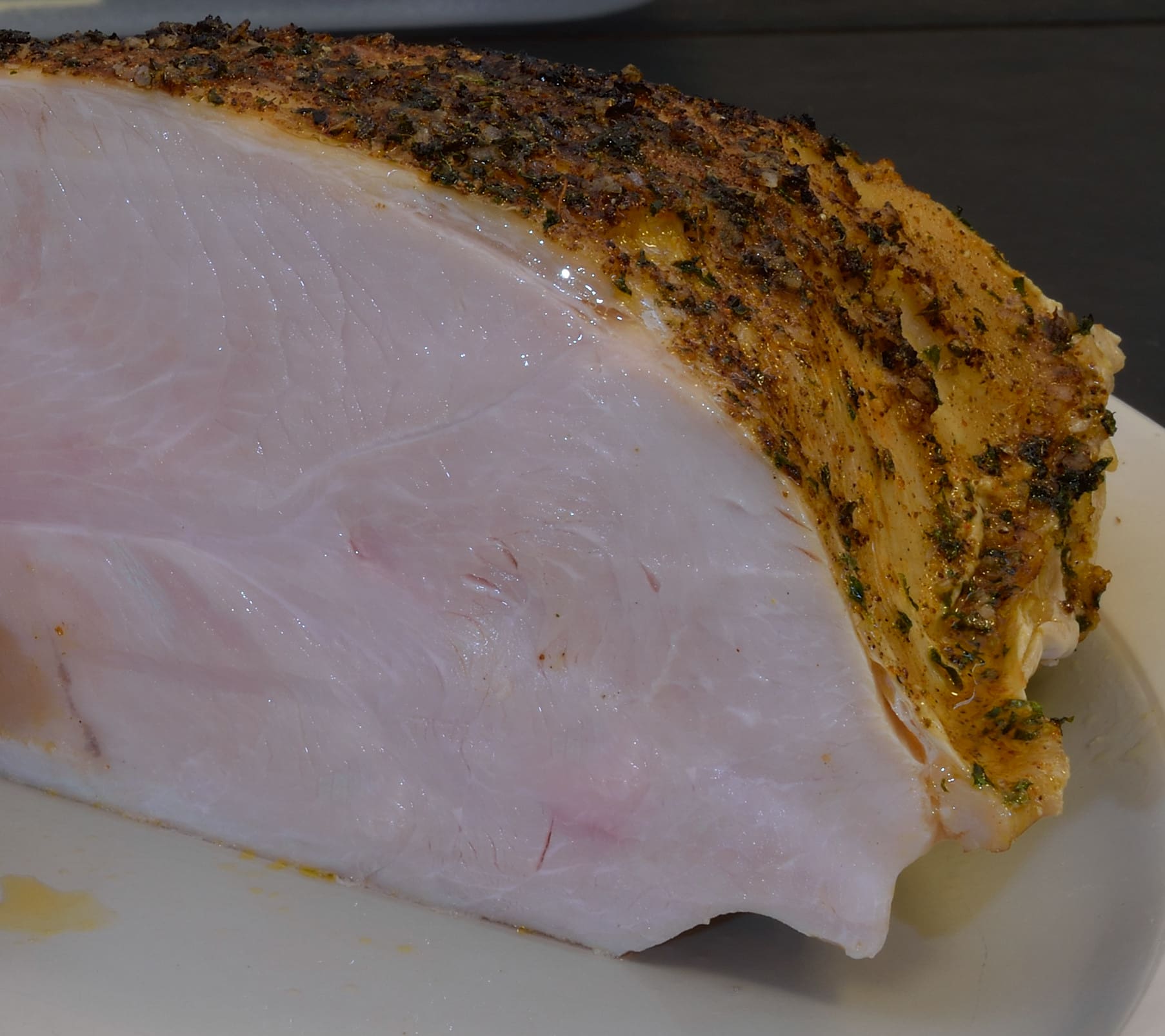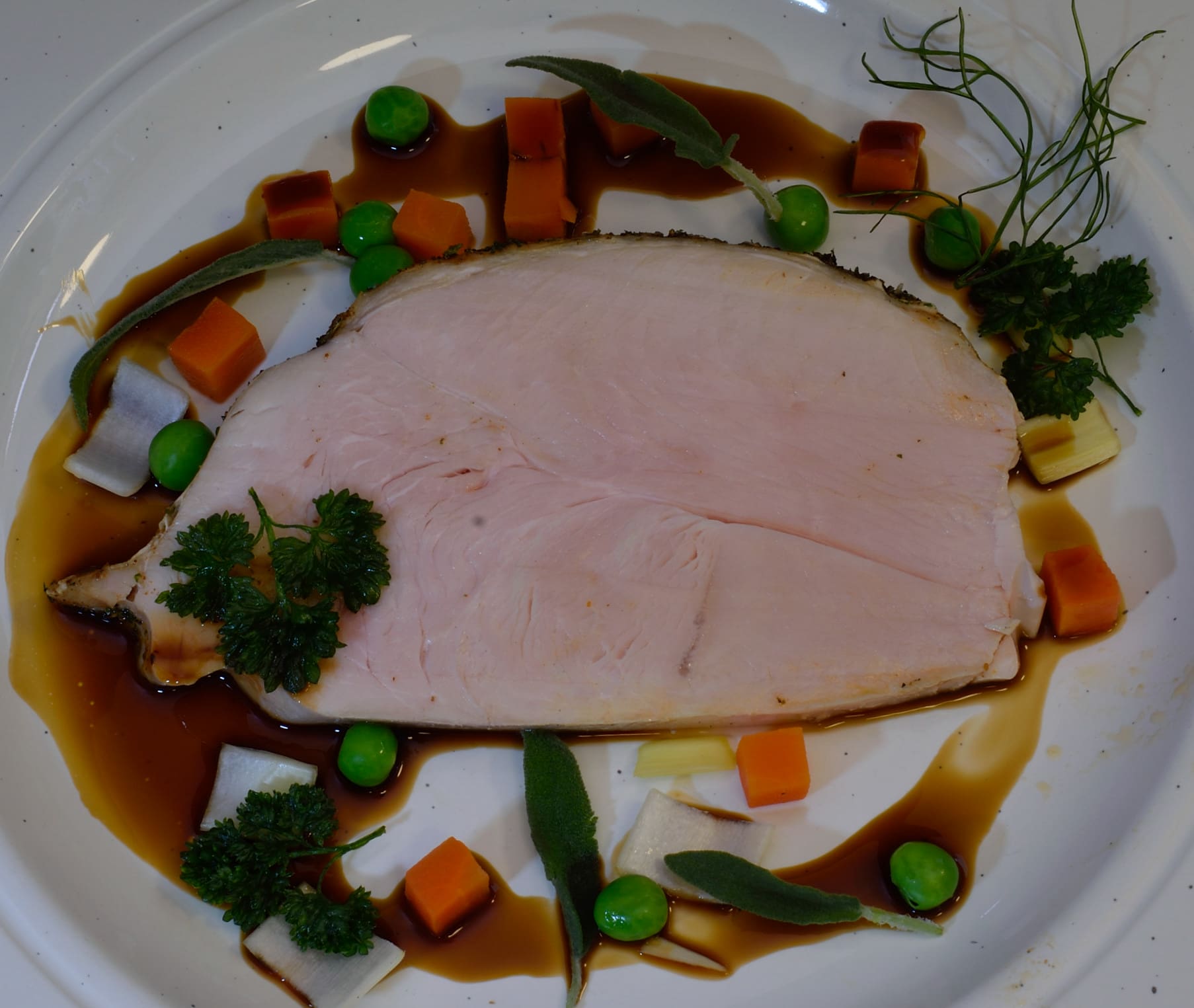Above: Lipavi C20 container, N20 polycarbonate racks. Lipavi C20L lid.
Serves 3+
Level of difficulty 2.5
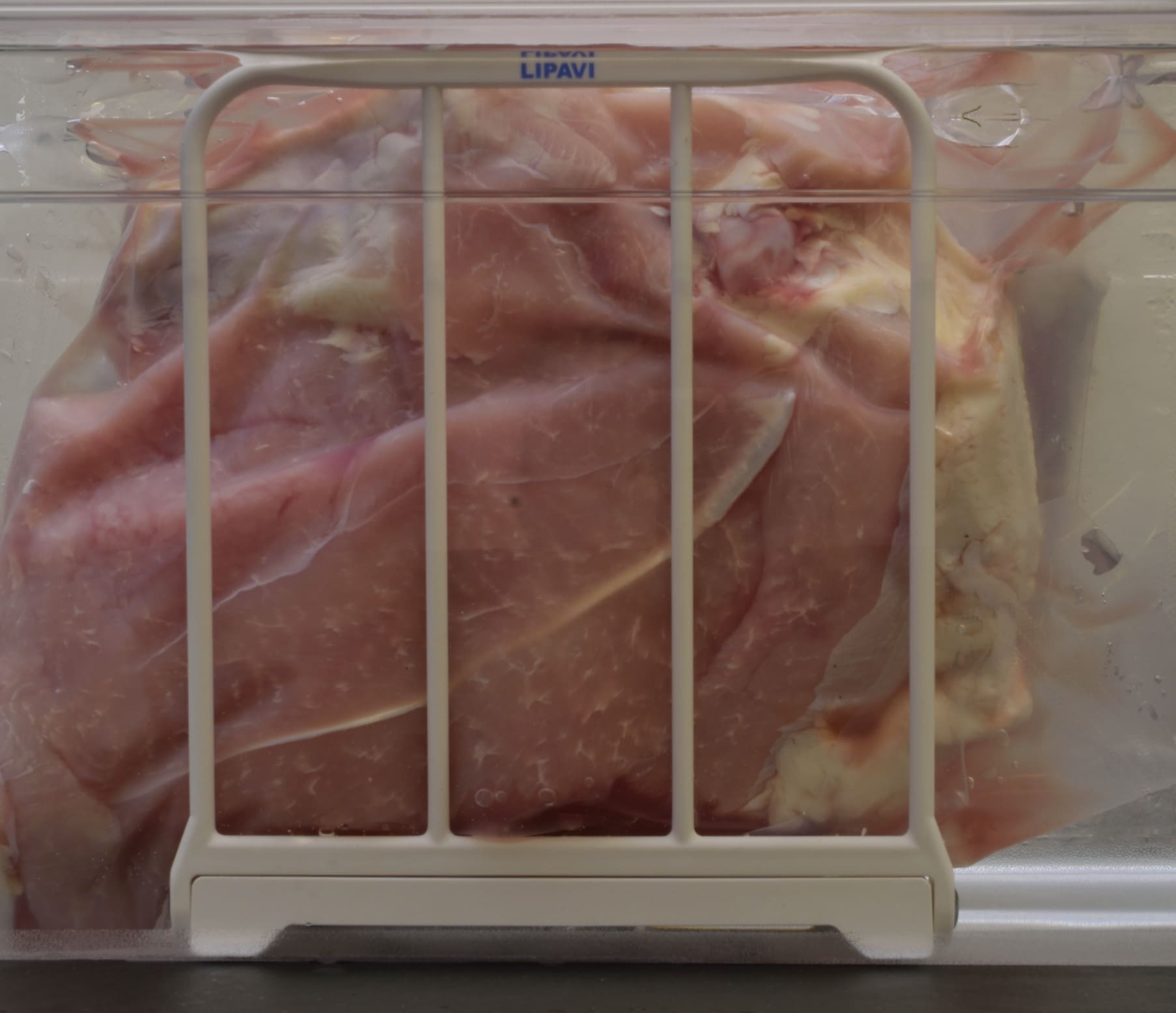
Preheat your sous vide bath to between
135 F/57 C for a processing interval of (4-8 hours) and
155 F/68 C for a processing interval of (2.5 -4 hours).
At first glance, many newcomers find sous vide time requirements to appear inconvenient. Unlike traditional methods, and because of the uniquely precise temperatures utilized, there is no “moment” before which the protein in question is under-cooked or after which it is over-cooked. Even though temperatures within 5 F above or below 140 F/60 C are generally preferred, those temperatures can be increased to accelerate the process. This will result in a slight but tolerable increase in moisture release from the protein.
Once pasteurization has been achieved, and the lower the acceptable temperature used, processing intervals may frequently be extended to as long as 100% of the original target time without causing a noticeable difference in results. This opens up a world of possibilities that make sous vide processing MORE convenient than conventional cooking.
Based on the temperature utilized, the practitioner can decide whether to utilize an 8+ hour interval that starts in the morning (i.e. before leaving for work) to as little as 3 hours or even less in some cases. If one opts to cold shock and refrigerate the turkey breast, the retherming process can be accomplished in one hour or less–no longer than the time required to assemble a meal prepared by conventional means. Faster than having a pizza delivered.
For a detailed explanation of how to remove the bones from a raw turkey breast, visit HERE. To make turkey gravy from the bones visit HERE.
Procedure:
Vacuum seal the individual turkey breast(s) in heat rated plastic bags. Sous vide process the packages for the intervals listed above that most closely match your preferences.
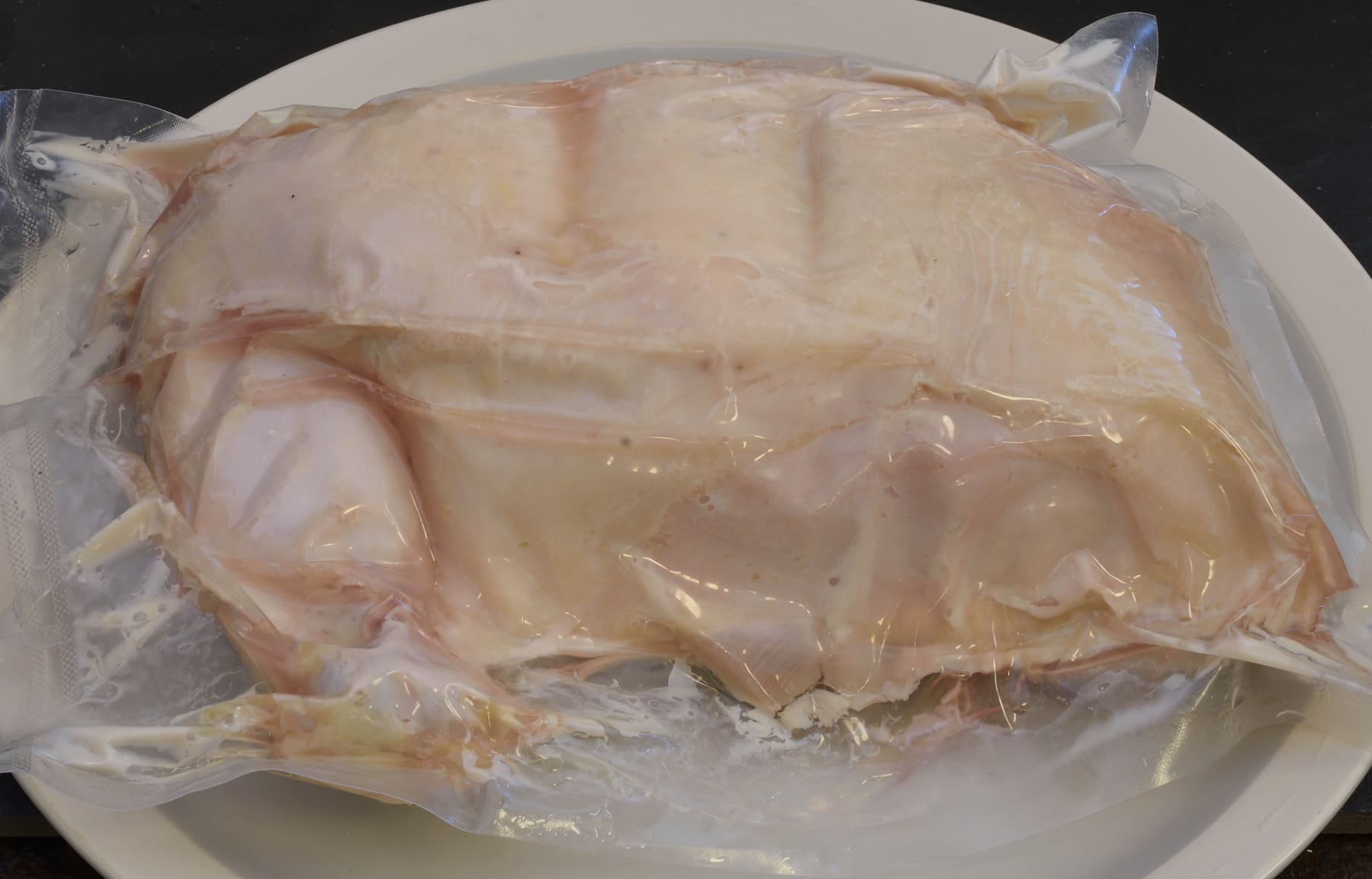
Harvest the juices. If this isn’t just about the most amazing thing about sous vide I don’t know what is.
Note: The sealed package can also be cold shocked in iced water until it achieves 70 F/21 C, refrigerated it to 40 F/4 C, labeled, dated, and then rethermed at your convenience or served cold. As long as the seal is not broken, the turkey will keep in the refrigerator for at least two weeks.

Cooking a turkey breast by any other conventional means will result in a weight loss of at least 25%. This is barely 4 oz coming from a 4 lb breast.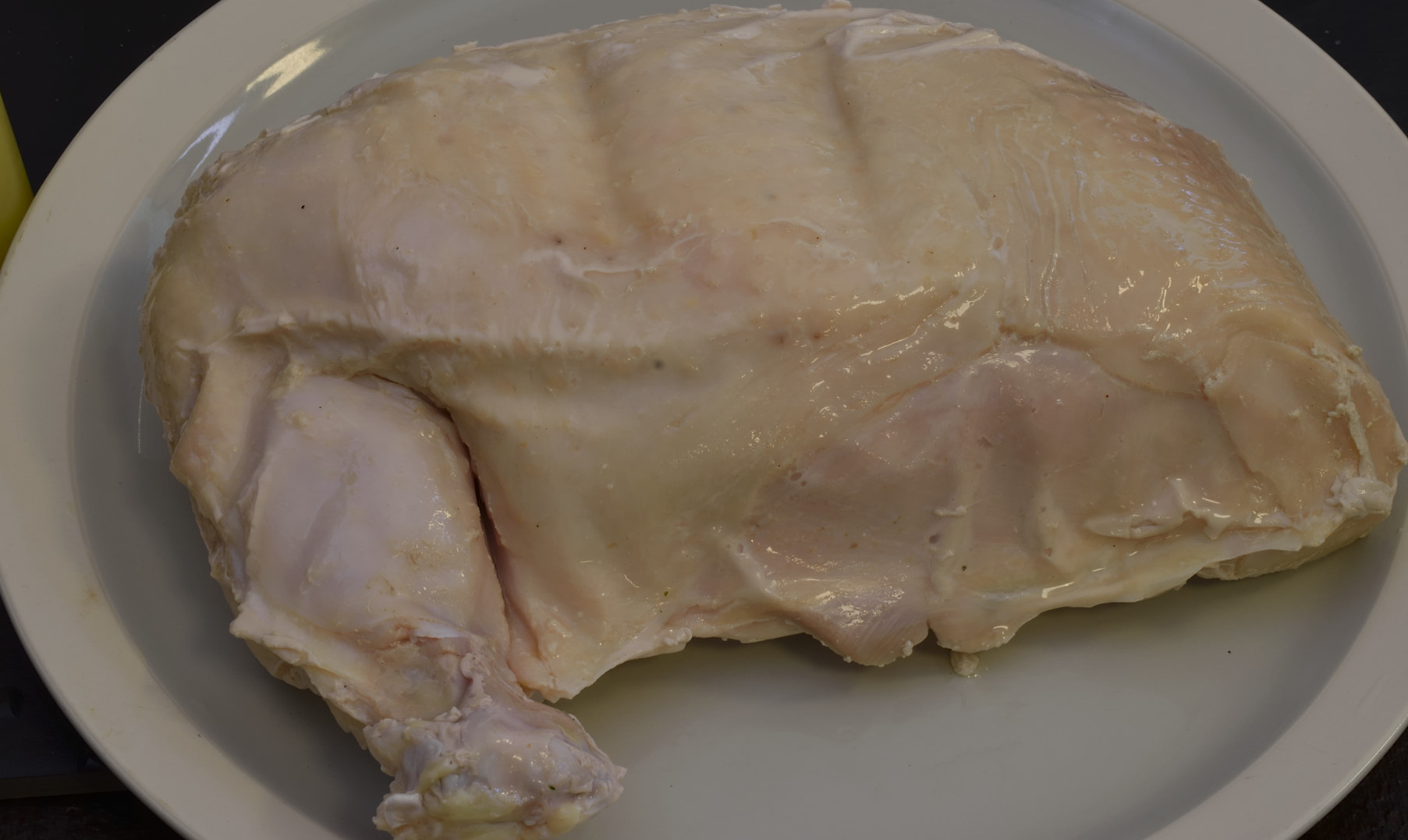
Moisten the surface with the egg white solution.
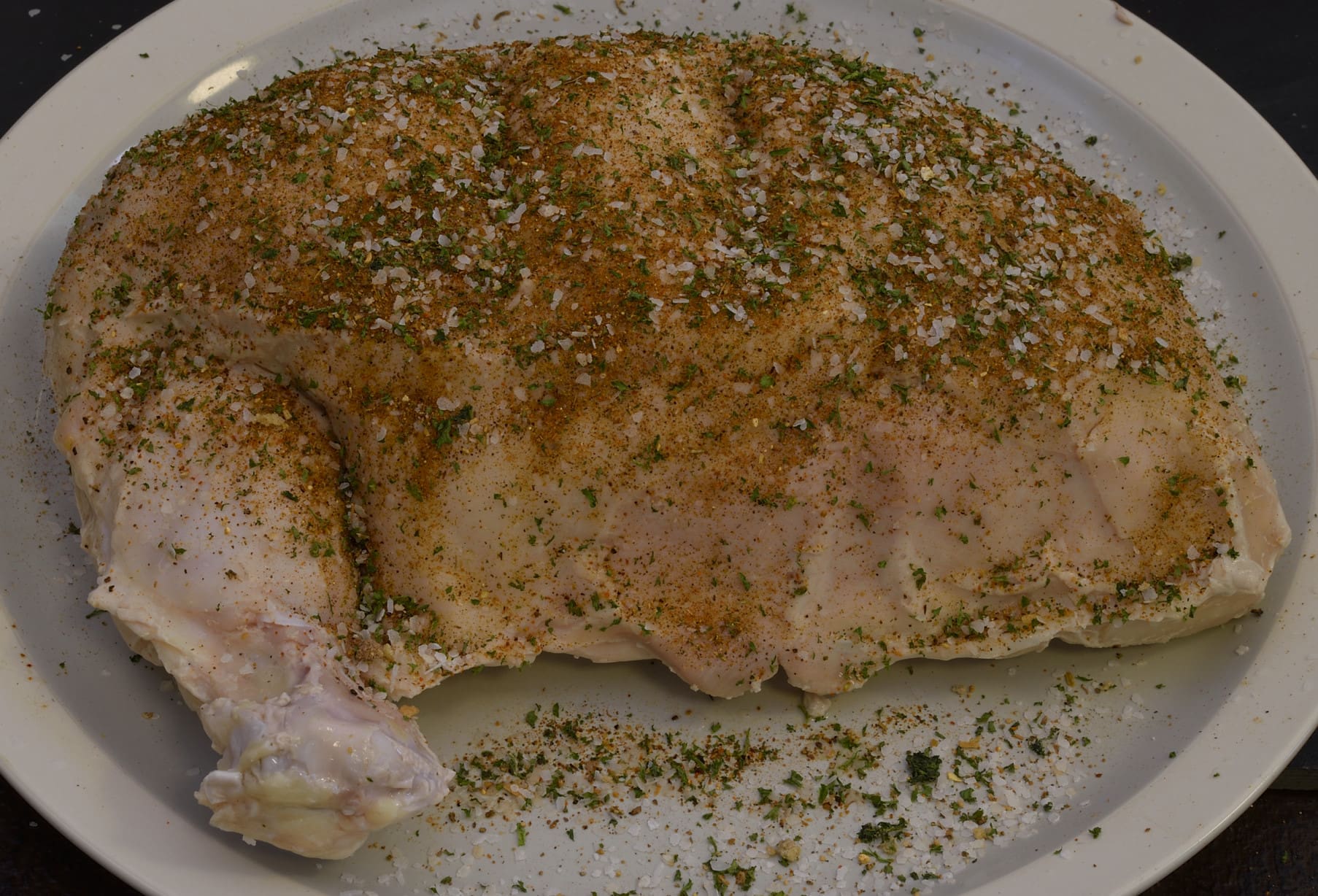
Sprinkle generously with salt and pepper or your favorite seasoning blend/rub.
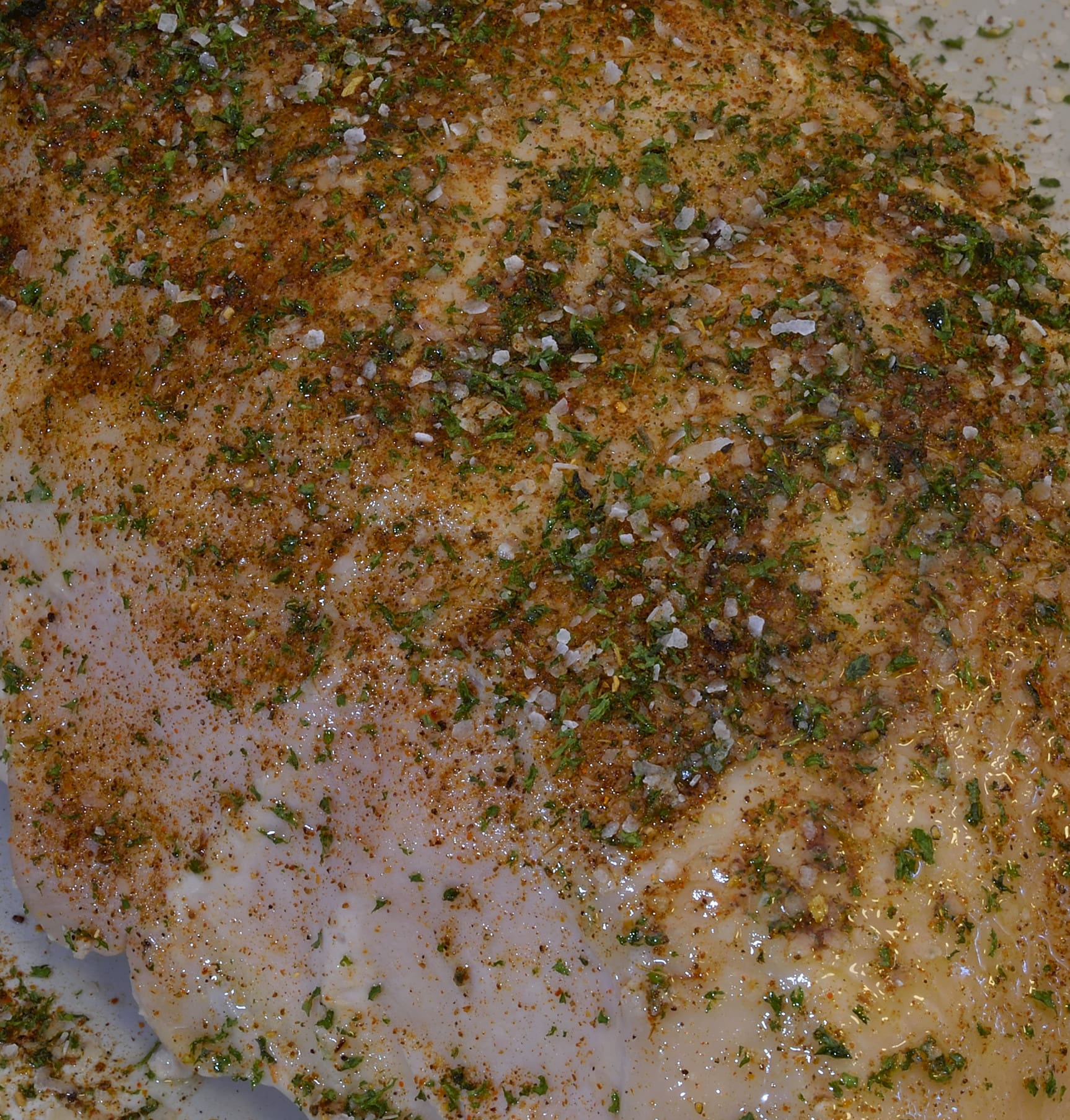
Drizzle or spray with a fine coating of oil.
Turn on the “broil” function that is common in most home ovens. If you’re oven doesn’t have one, just preheat the oven for one half hour to the highest temperature possible.
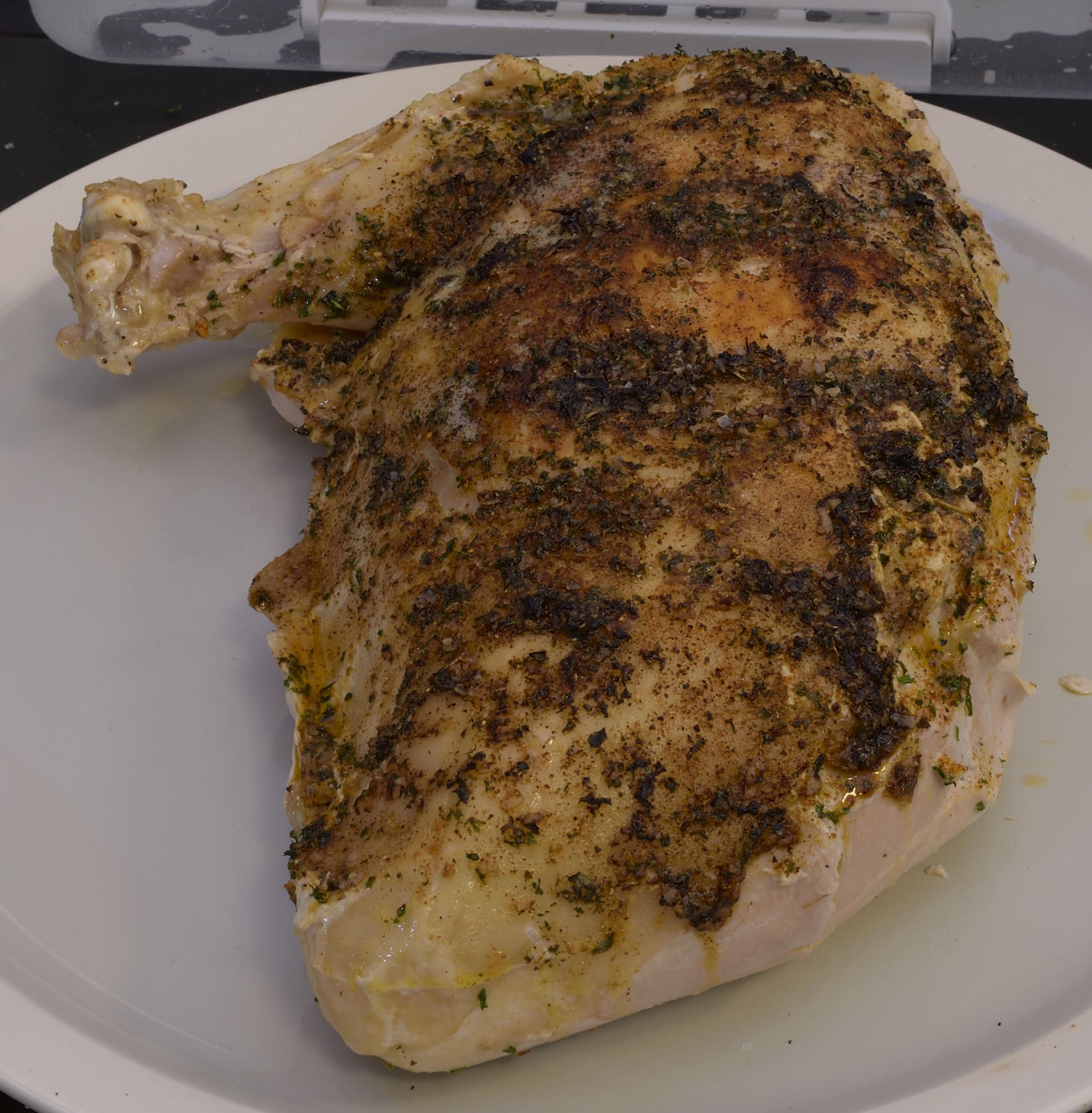
The turkey is already “mouth hot” so we are just creating the crispy skin effect–this took about five minutes–skin side only. It goes fast.
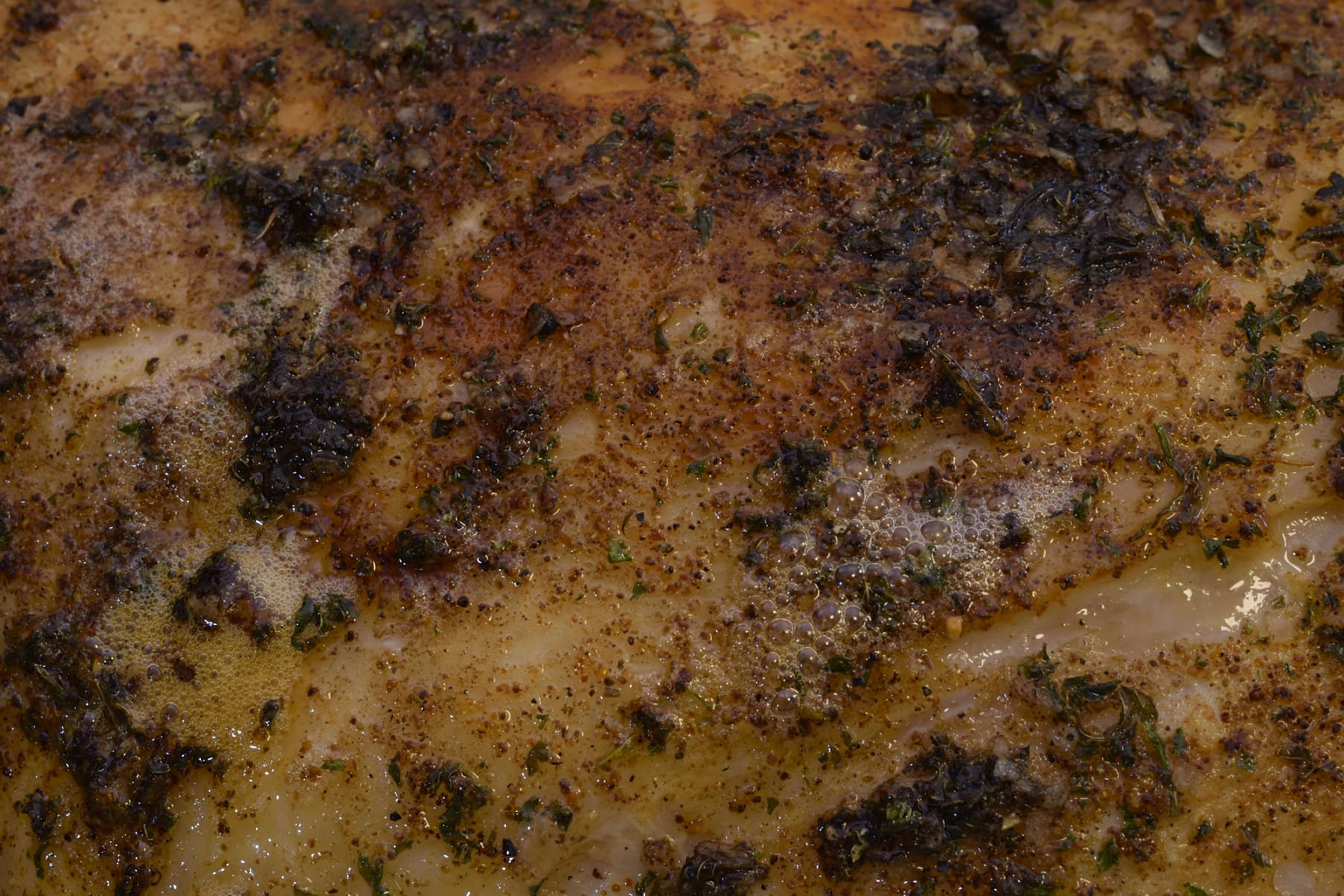
Remove from the oven and rest for five minutes to improve ease of handling.
Arrival!
The high moisture content is plainly evident.
Simplicity reigns supreme.
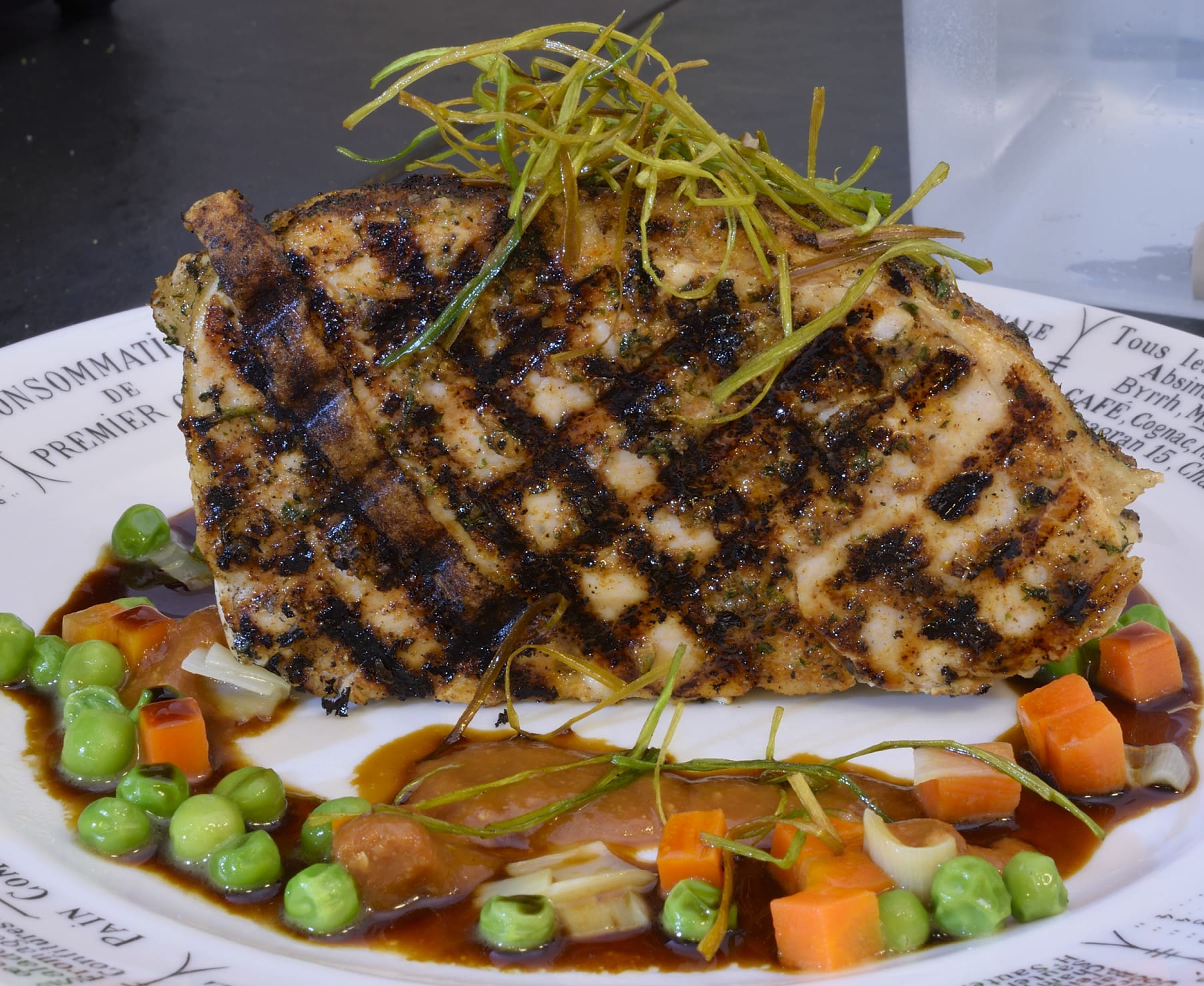
This turkey is so moist, it can be cooled after the original service, sliced thick, re-seasoned and grilled without drying out. Try doing that with turkey prepared any other way!
Cold Service
Sliced thin, the turkey can be incorporated into the ever growing list of popular sandwiches and wraps. This can be done before or after the searing process, as is your preference. Although the deli versions of sous vide turkey usually include the un-seared skin, it is easily peeled off before slicing as preferred.
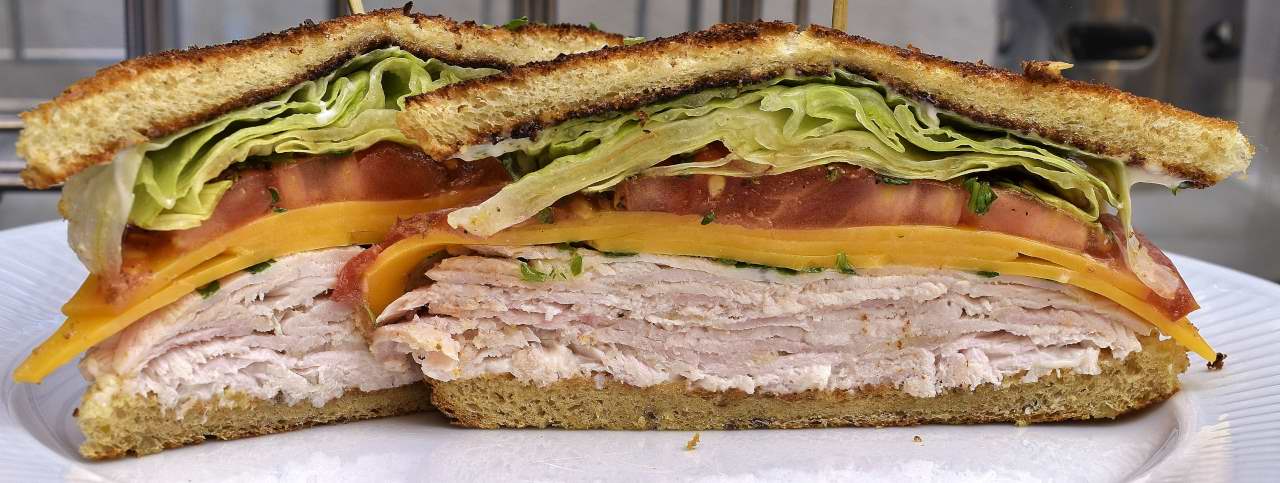
Ben Franklin felt strongly that the turkey better represented our national spirit than should the eagle. Admittedly, “Tom” is much more utilitarian and useful than the aggressively predatory and nearly extinct eagle.
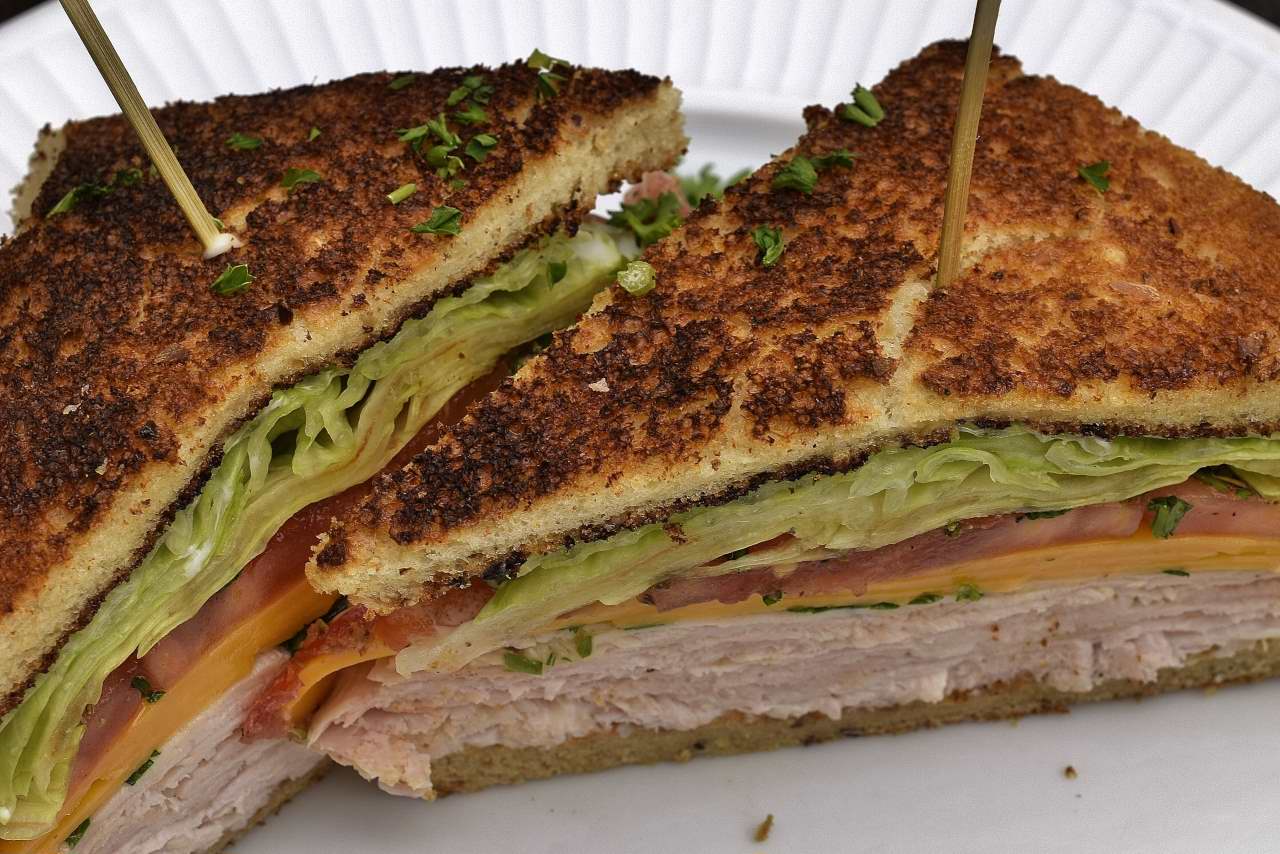
As an old school dinosaur myself, I cannot abandon the urge to trim the crust.
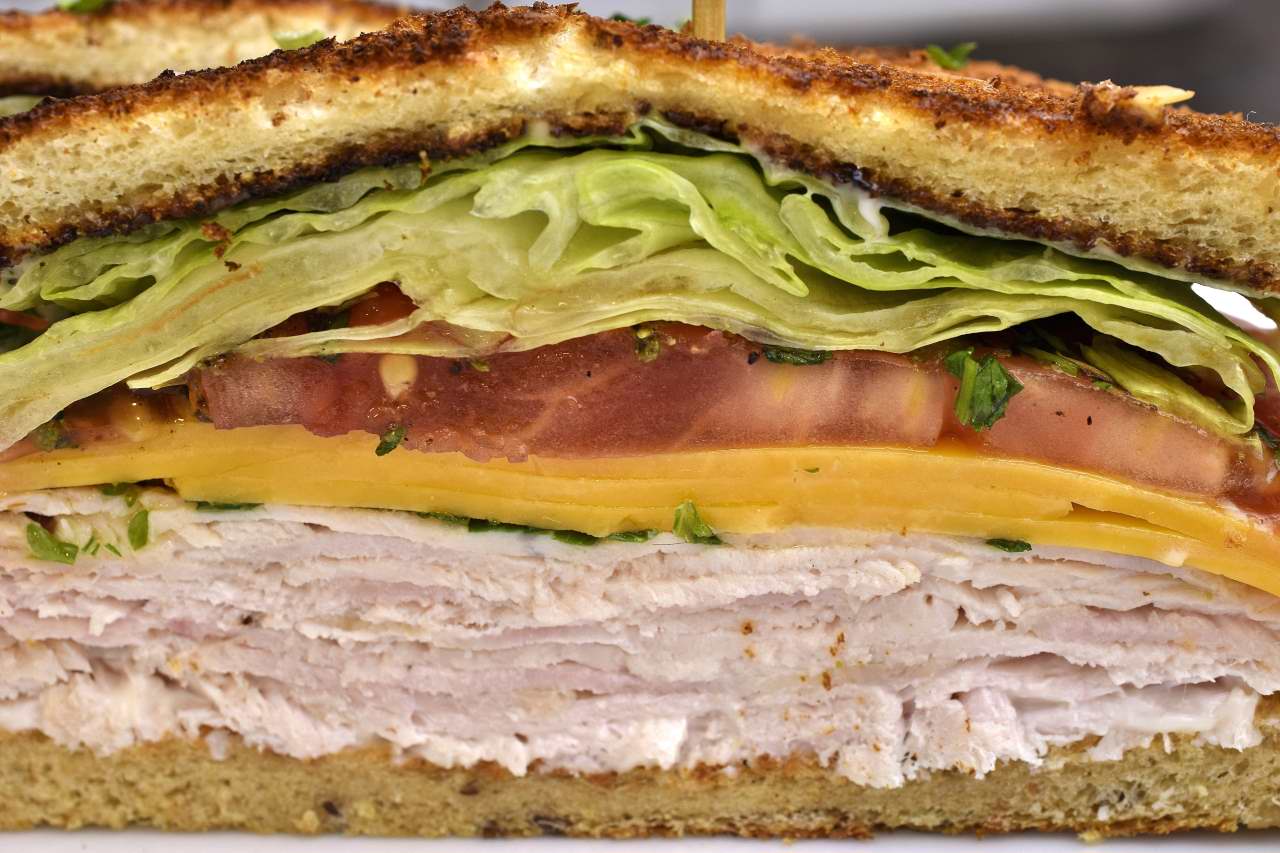
The Dagwood

Cast Iron grilled, a fine point that the palate is actually capable of distinguishing.
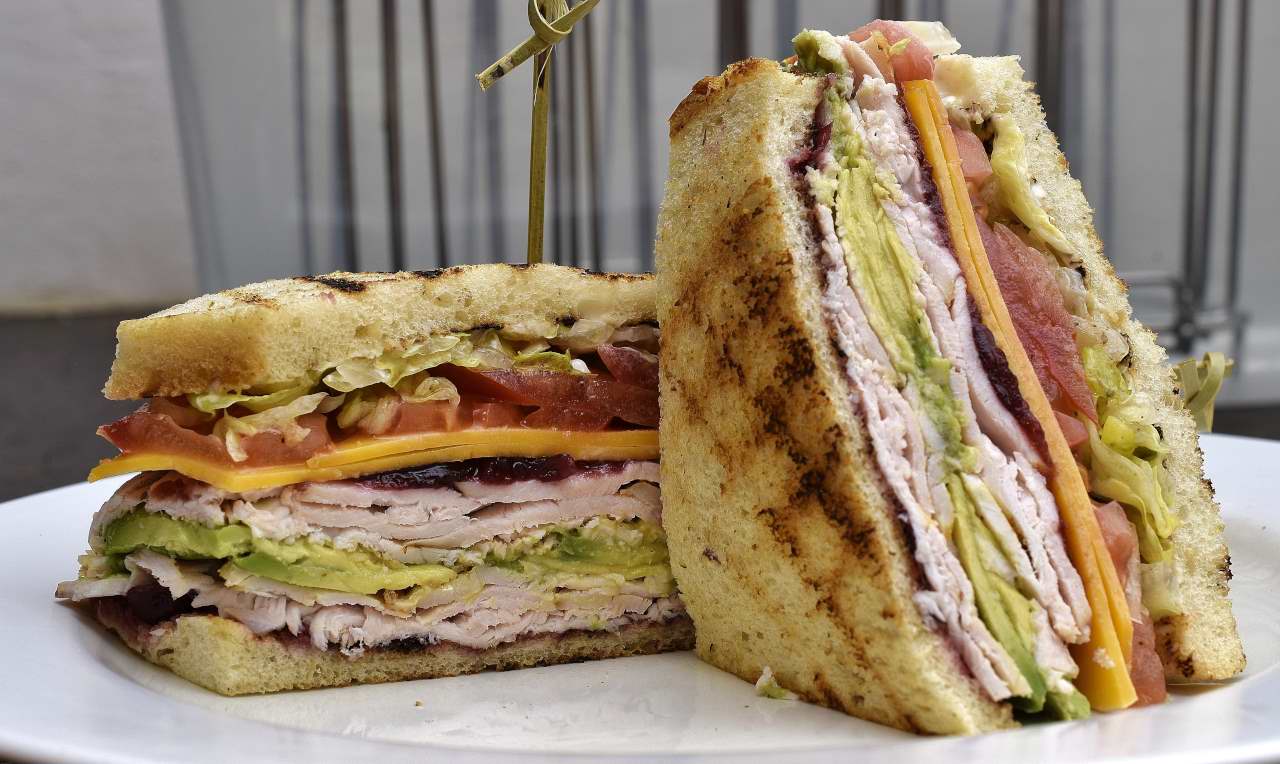
From bottom to top–grilled bread, cranberry, turkey, avocado, turkey, cranberry, cheddar, seasonings…
 Sliced tomato, shredded lettuce with kosher salt and extra virgin olive oil, mayonnaise on grilled bread.
Sliced tomato, shredded lettuce with kosher salt and extra virgin olive oil, mayonnaise on grilled bread.
Norm King
